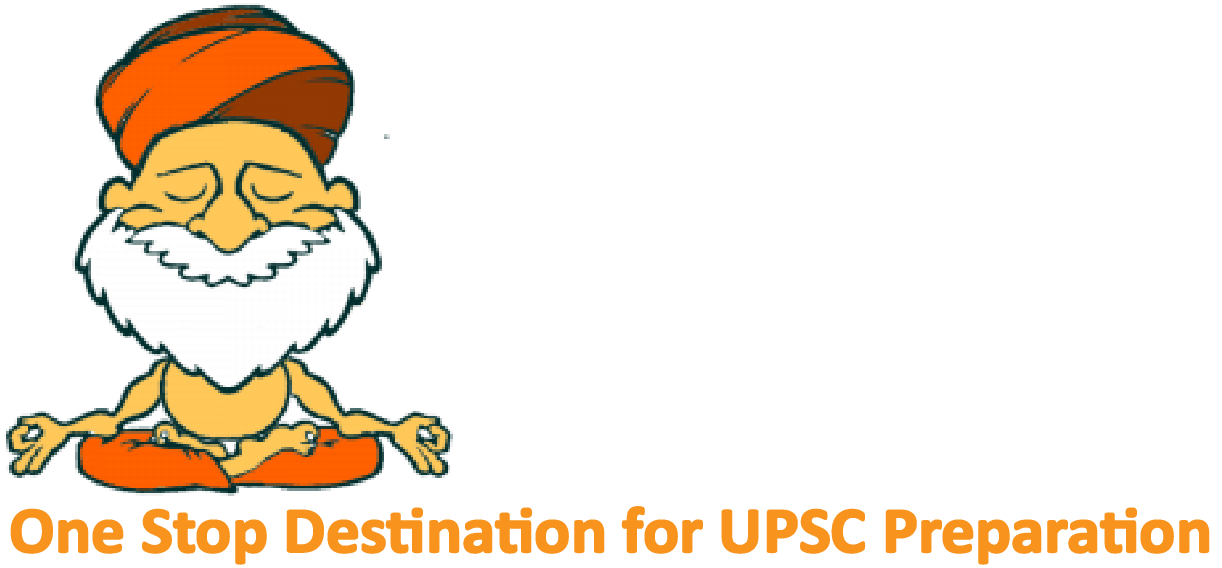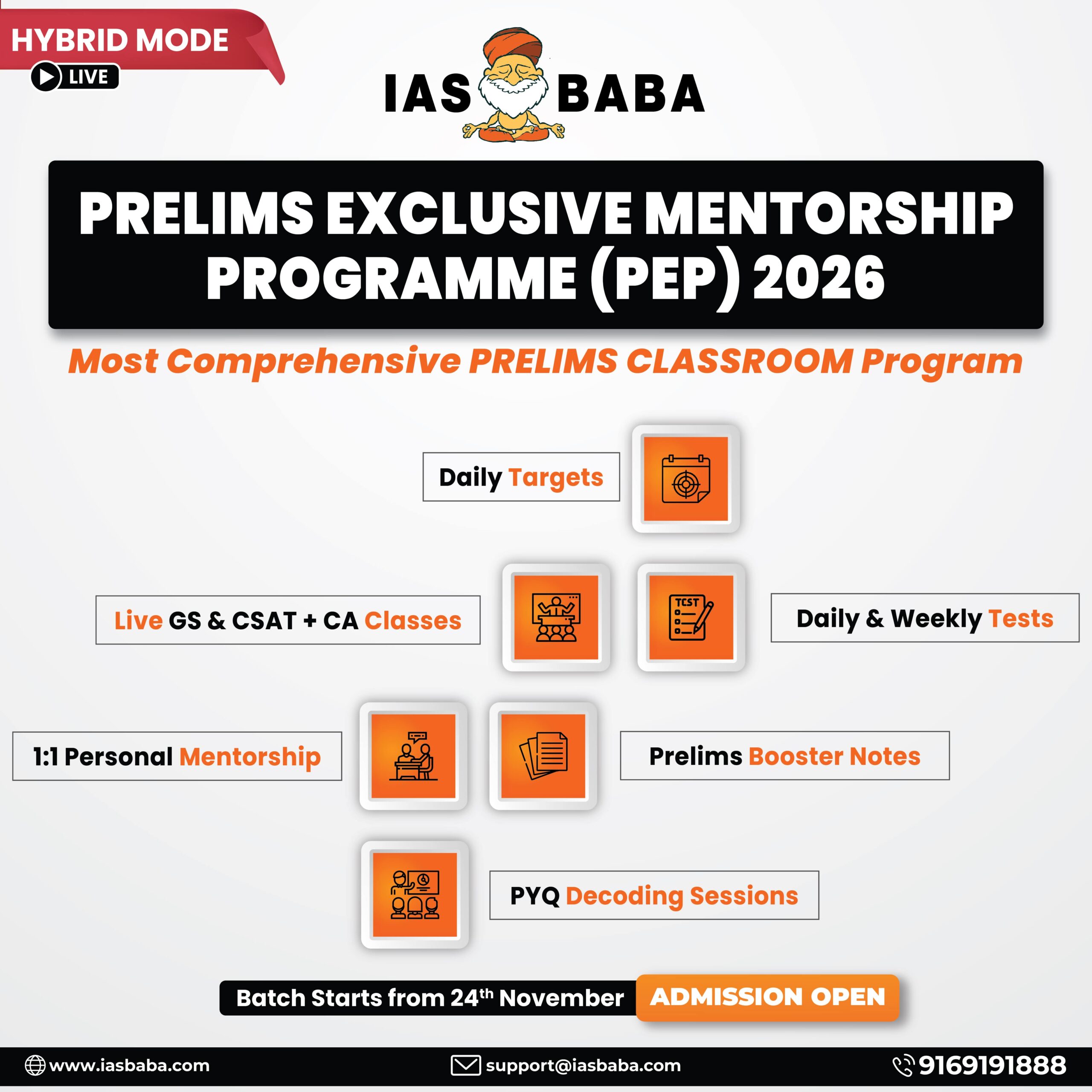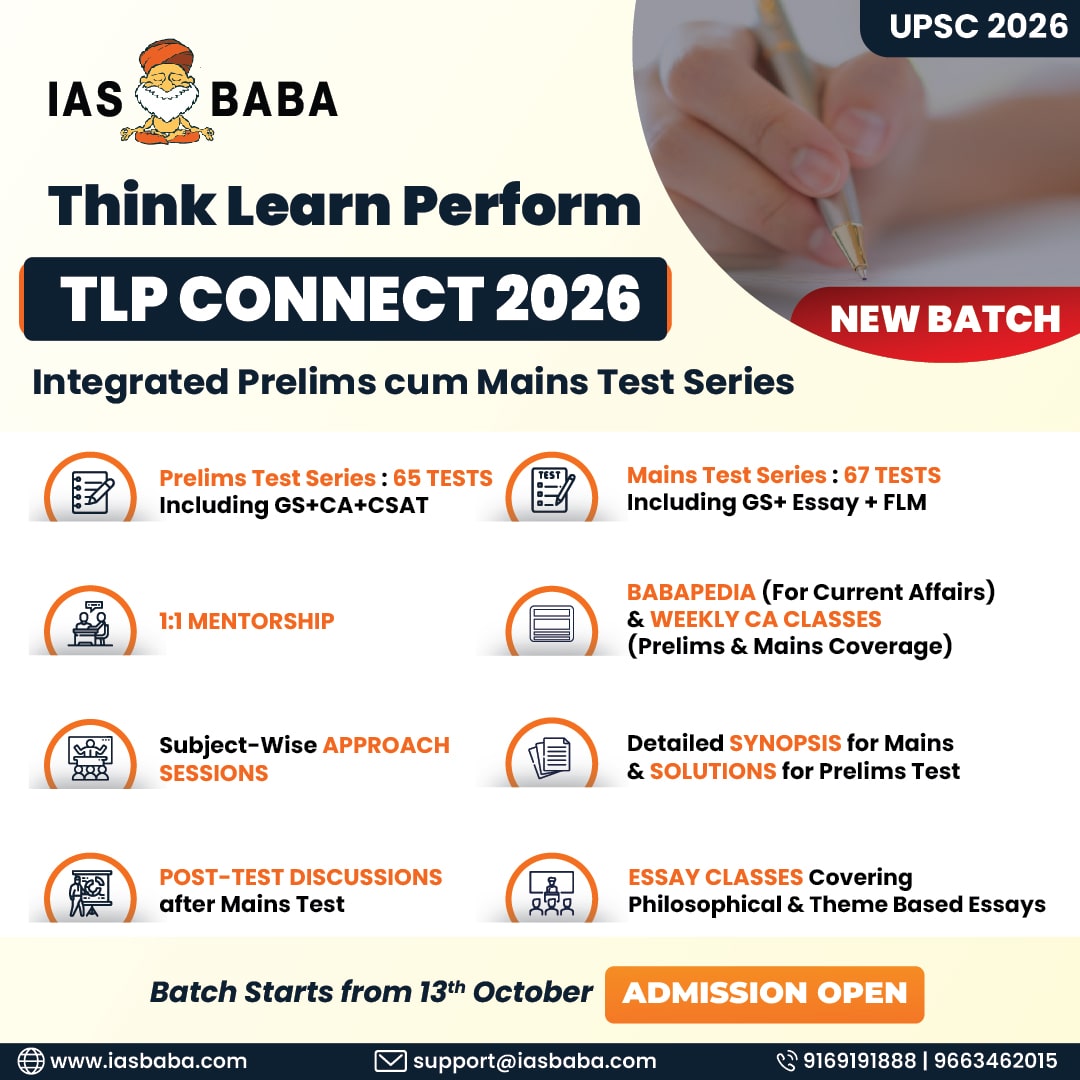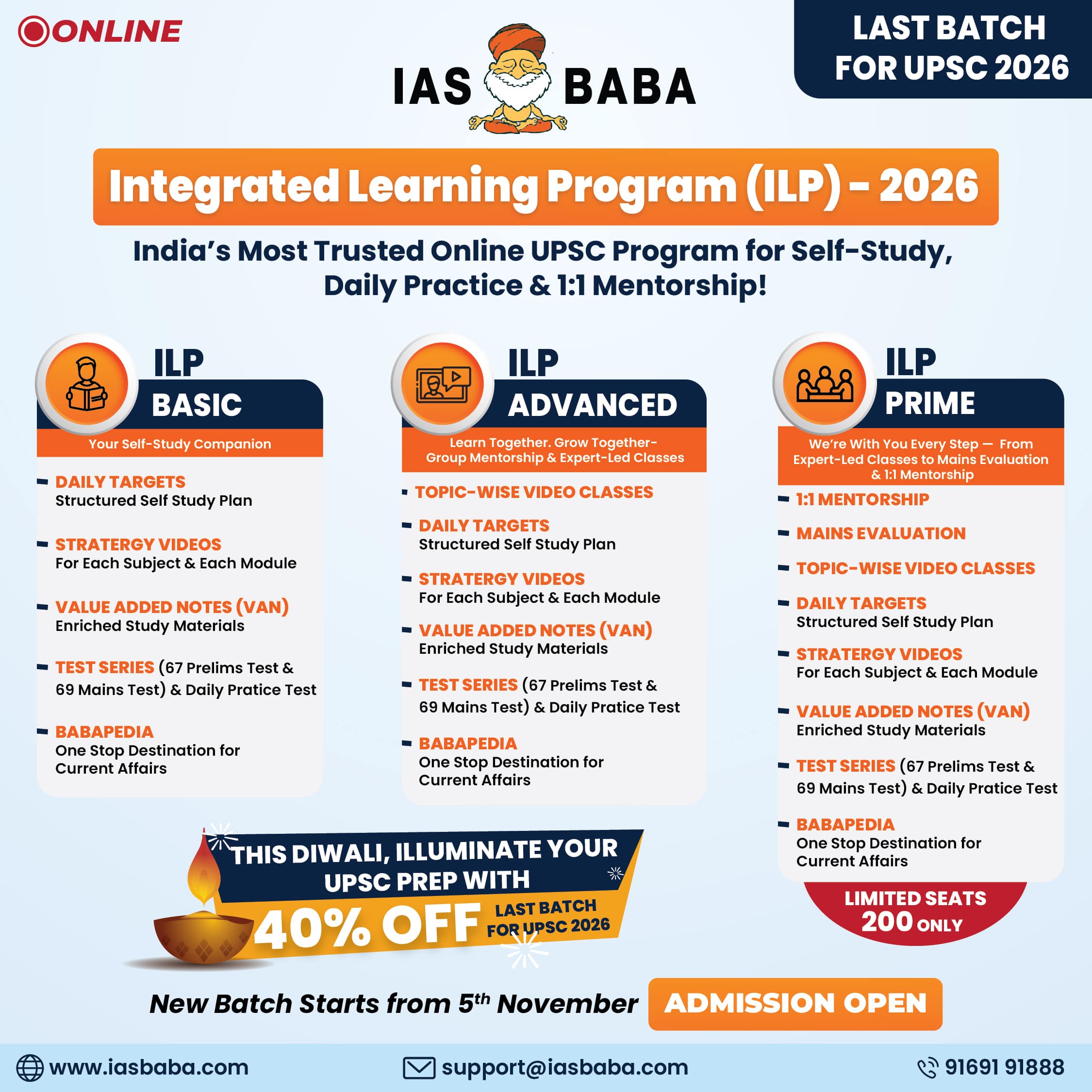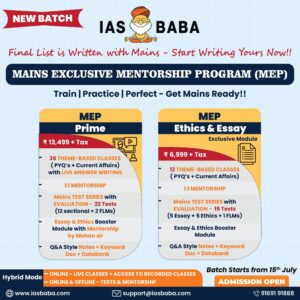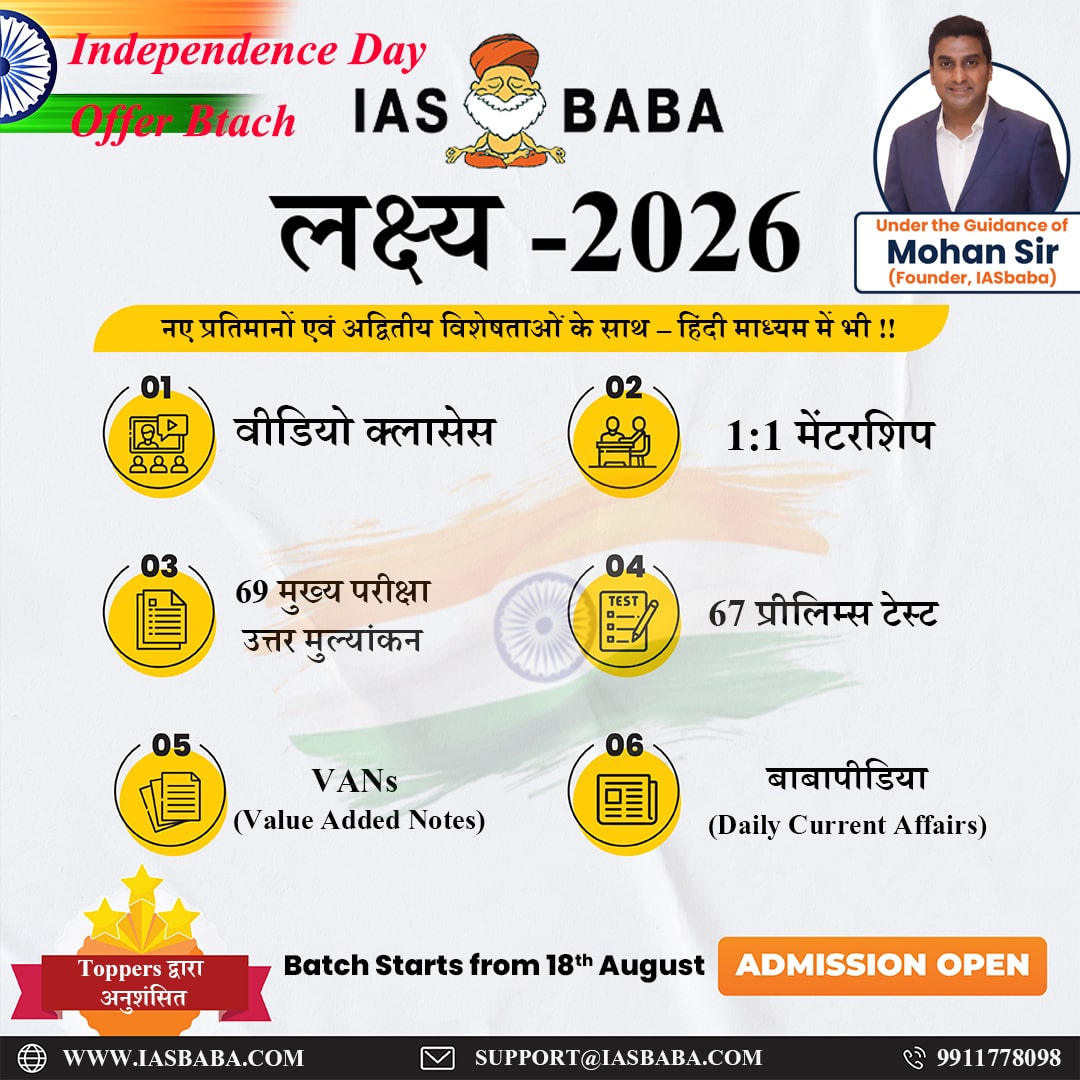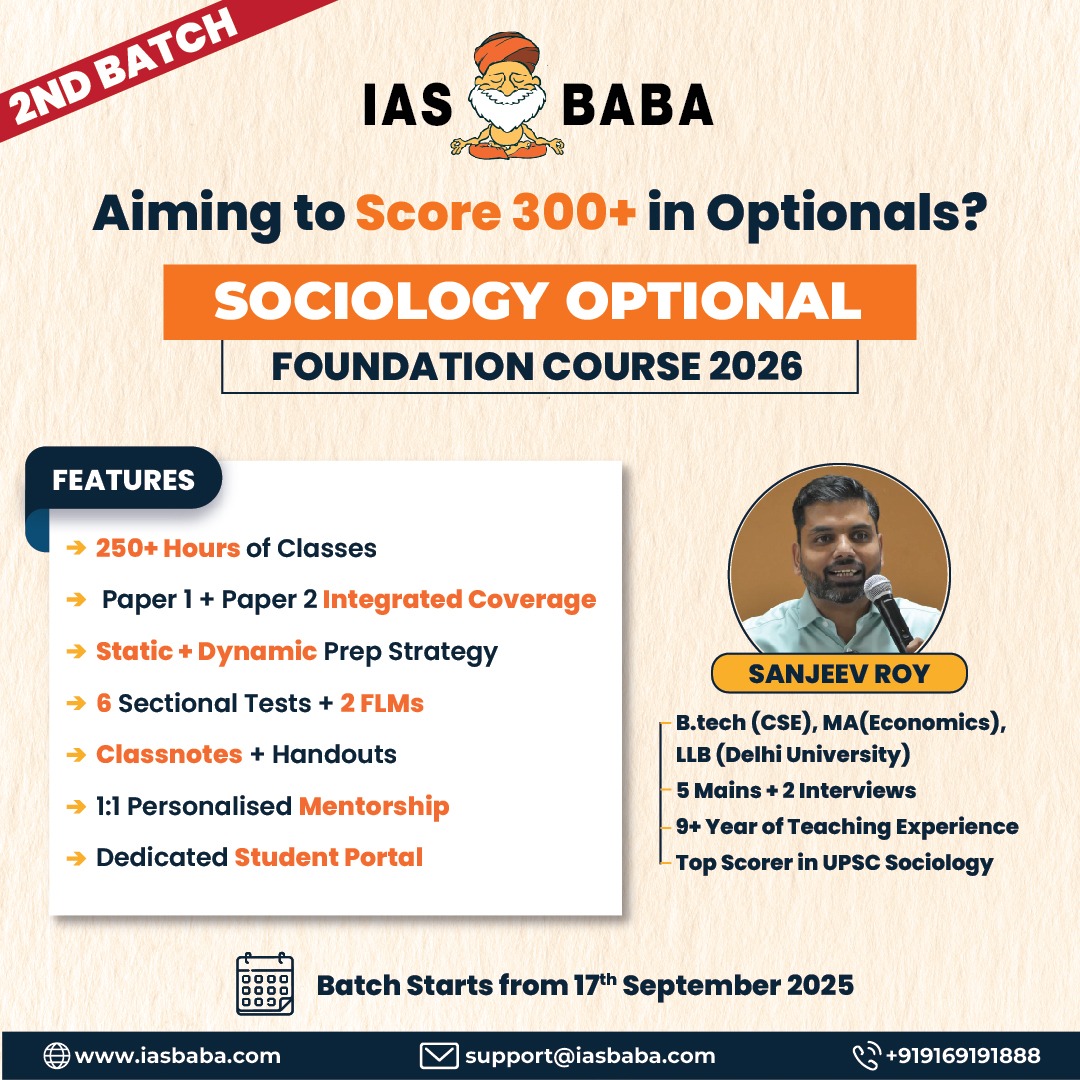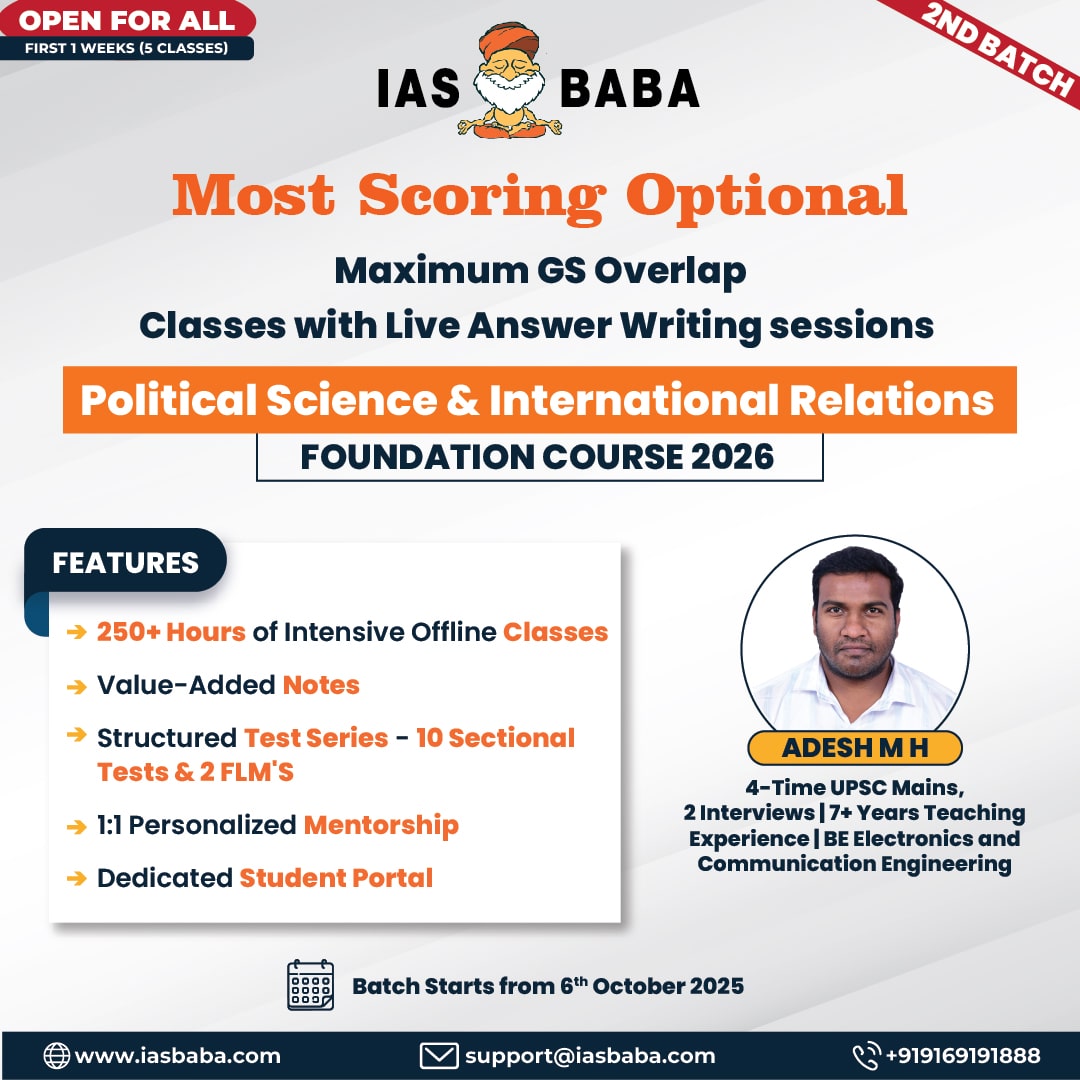IASbaba's Daily Current Affairs Analysis
Archives
(PRELIMS & MAINS Focus)
Syllabus:
- Prelims & Mains – GEOGRAPHY, WORLD HISTORY, INTERNATIONAL RELATIONS
Context: The U.S. State Department’s Taiwan page removed a previous statement about not supporting Taiwan’s independence last week.
Background: –
- The United States has no formal diplomatic ties with Taiwan but is its strongest international backer.
About Taiwan
- Taiwan, officially the Republic of China (RoC), is situated in the western Pacific Ocean and is separated from mainland China by the Taiwan Strait. Taiwan is neighbored by Japan to the northeast, the Philippines to the south, and mainland China to the west.
- The East China Sea lies to the north of the island, the Philippine Sea to the east, the Luzon Strait directly to the south, and the South China Sea to the southwest.
- Taiwan is prone to earthquakes as it lies along the Pacific “Ring of Fire” — where 90% of the world’s earthquakes take place.
History of Taiwan
- Taiwan was briefly controlled by the Dutch and Spanish in the 1600s. In 1684, the Qing dynasty incorporated Taiwan as part of Fujian province and later declared it a separate Chinese province in 1885.
- Following the Qing’s defeat in a war with Japan, it became a Japanese colony in 1895. In 1945, it was handed over to the Republic of China government at the end of World War Two.
- In 1949 after being defeated by Mao Zedong’s communist forces, the Republic of China government fled and moved its capital to Taiwan, and Republic of China remains the island’s formal name.
- Mao set up the People’s Republic of China, and claimed it was the only legitimate Chinese government for the whole of China, including Taiwan, as the Republic of China’s successor state.
- For decades, the Republic of China (ROC) based in Taipei claimed to be the legitimate government of China. However, in 1971, it was expelled from the United Nations in favor of the Beijing government.
- However, Taiwan is a region where the people elect their own leaders, and it has a defined territory governed by its own military, passport, and currency. As a result, Taiwan functions with de facto independence, even though most countries do not formally recognize it as such.
- Currently, only 12 countries maintain formal diplomatic ties with Taipei, most of which are small and developing nations. Most major Western countries, along with U.S. allies, maintain close unofficial relations with Taiwan by recognizing its passport and having de facto embassies in each other’s capitals.
- India does not have formal diplomatic ties with Taiwan yet. India has an office in Taipei for diplomatic functions — India-Taipei Association (ITA) is headed by a senior diplomat. Taiwan has the Taipei Economic and Cultural Center (TECC) in New Delhi. Both were established in 1995.
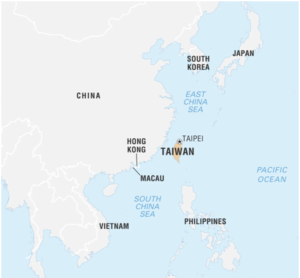
Source: Indian Express
Syllabus:
- Prelims & Mains – GEOGRAPHY, ENVIRONMENT
Context: The Haryana government’s ambitious 3,858 hectare Aravali safari park project spread across Gurugram and Nuh is envisaged to be the world’s largest safari park. However, the project has faced stiff opposition ever since it was first mooted.
Background: –
- A group of 37 retired Indian Forest Service officers have written a letter to Prime Minister seeking to scrap the project arguing that the project’s aim is to simply increase tourist footfall and not conserve the mountain range.
Key takeaways
- The hills in the southern districts of Gurugram and Nuh are a part of Aravali, the oldest fold mountain range in the world.
- Aravali runs diagonally across Rajasthan extending from Champaner in Gujarat in the southwest to near Delhi in the northeast for about 690 km.
- It is ecologically significant as it combats desertification by checking the spread of the Thar Desert towards eastern Rajasthan, and performs the role of an aquifer with its highly fractured and weathered quality rocks allowing water to percolate and recharge the groundwater.
What are the laws protecting Aravali?
- Of the approximately 80,000 hectare Aravali hill area in Haryana, a majority is protected under various laws and by orders of the Supreme Court and NGT.
- The most widespread protection to the Aravalis comes from the Punjab Land Preservation Act (PLPA), 1900. The Special Sections 4 and 5 of the Act restrict the breaking of land and hence deforestation in hills for non-agricultural use.
- Recently around 24,000 hectares has been notified as Protected Forest under the Indian Forest Act, as a proposed offset to forest land diversion in the Nicobar islands.
- Similarly, the T.N. Godavarman Thirumulpad judgment (1996) extends legal protection to forests as per dictionary meaning — which should cover the remaining Aravali areas that are not notified as forest.
- The Regional Plan-2021 for the National Capital Region also offers crucial protection, designating the Aravalis and forest areas as ‘Natural Conservation Zone’ and restricting the maximum construction limit to 0.5%.
Source: The Hindu
Syllabus:
- Prelims & Mains – SCIENCE & TECHNOLOGY
Context: Recently, Chinese scientists reported that they were able to maintain a plasma at a temperature of 100 million degrees C for about 1,066 seconds in a nuclear fusion reactor called the Experimental Advanced Superconducting Tokamak (EAST).
Background:
- Nuclear fission produces harmful radioactive waste whereas nuclear fusion doesn’t. This is why developing a nuclear fusion reactor has become an important technological goal for the world.
Challenges of nuclear fusion
The tritium problem
- The problem is the amount of energy required to start and sustain a fusion reaction.
- The lightest nucleus in nature is of hydrogen, consisting of a single proton. An isotope of hydrogen called deuterium has one proton and one neutron in its nucleus. The nucleus of another isotope called tritium has one proton and two neutrons.
- Deuterium-deuterium fusion requires a higher temperature to begin than deuterium-tritium fusion. This is because the extra neutron in the tritium nucleus helps overcome the repulsion of like-charges between the protons.
- The fusion of a deuterium and a tritium nucleus creates a non-radioactive helium-4 nucleus, a neutron, and 17.6 MeV of energy, which is significant.
- While deuterium is abundant in seawater, there are no natural deposits of tritium and it is very hard to produce. At present it is mostly created as a by-product in heavy-water fission reactors in Canada, India, and South Korea.
The temperature problem
- For two nuclei to fuse, two things need to happen: the like-charges in the nuclei (due to the protons) need to be overcome, then the particles need to come within around 1 femtometre (fm) of each other so they can bond with each other using the strong nuclear force.
- This force is the strongest fundamental force in nature and is responsible for keeping protons and neutrons together in the nuclei of atoms. But on the flip side, it only acts across very short distances. This is why the nuclei need to be heated to such high temperatures: to give them enough energy to overcome their repulsion and get so close to each other.
- There are different reactor designs to achieve nuclear fusion by meeting these conditions. One set of designs involves the use of a tokamak — a donut-shaped vessel where the nuclei are confined, like in a cage, and made to fuse.
Importance of EAST
- At present, EAST isn’t producing electricity. It is yet to reach a milestone called ignition: meaning it doesn’t produce enough heat for more fusion reactions to occur, a.k.a. become self-sustaining.
- EAST is a testbed reactor for ITER, an international megaproject in which six countries around the world, including India, and the European Union are working together to build a tokamak that will sustain nuclear fusion that releases more energy than that required to sustain the plasma.
- Crucially, EAST’s successes are important for ITER’s future because the latter has come under criticism for its delayed timelines and cost overruns. ITER has been called the most expensive science experiment in history.
Source: The Hindu
Syllabus:
- Prelims & Mains – HISTORY, ETHICS
Context: February 18, 2025, marks the 189th birth anniversary of Ramakrishna Paramahamsa, the revered 19th-century saint.
Background: –
- Born as Gadadhar Chattopadhyay on February 18, 1836, Sri Ramakrishna Paramahamsa was one of the world’s most significant religious figures.
Key takeaways
- Ramakrishna Paramahamsa (1836–1886) was born in Kamarpukur, West Bengal.
- He underwent profound mystical experiences that led him to explore various religious practices, including Hinduism, Islam, and Christianity.
- Priest at Dakshineswar Kali Temple: At the age of 20, Ramakrishna became the priest of the Dakshineswar Kali Temple near Kolkata, where he began his intense spiritual practices.
- Devotion to Goddess Kali: He developed an intense devotion to Goddess Kali, whom he regarded as the Divine Mother. His spiritual practices often involved deep meditation and communion with the Divine.
Core Teachings and Impact:
- Oneness of God: Ramakrishna emphasized that all religions lead to the same ultimate truth, and God can be realized through any sincere spiritual path.
- Divine Motherhood: He often spoke of God as the Divine Mother, emphasizing love, compassion, and devotion.
- Renunciation and Detachment: He advocated for detachment from material desires and the importance of leading a simple, spiritual life.
- Service to Humanity: Ramakrishna believed that serving humanity is a form of worship, as God resides in all beings.
- Harmony of Religions: His famous saying, “As many faiths, so many paths,” highlights his belief in the unity of all religions.
- Spiritual Realization Over Rituals: Emphasizing personal, direct experience of the divine, he challenged the orthodox practices of his time, advocating for a more experiential and inclusive spirituality.
Historical and Cultural Relevance:
- Indian Renaissance: His ideas contributed significantly to the 19th-century spiritual and cultural revival in India. By promoting the intrinsic value of Indian spiritual traditions, he played a role in countering the colonial narrative that often undermined indigenous culture.
- Influence on Modern Thought: His teachings laid the groundwork for later reforms in social and religious spheres. Most notably, his disciple Swami Vivekananda carried forward his message, establishing the Ramakrishna Mission and introducing Indian philosophy to the Western world.
Source: News18
Syllabus:
- Prelims – SCIENCE & TECHNOLOGY
Context: Meta announced its most ambitious subsea cable endeavour ever – Project Waterworth.
Background: –
- The project will be a multi-billion dollar, multi-year investment to strengthen the scale and reliability of the world’s digital highways.
Key takeaways
- Project Waterworth is an ambitious initiative by Meta to build the world’s longest undersea cable system, spanning over 50,000 kilometers—exceeding Earth’s circumference.
- The initiative will bring industry-leading connectivity to the US, India, Brazil, South Africa, and other key regions.
- The cable would be the longest to date that uses a 24 fibre-pair system, giving it a higher capacity, and would help support its AI projects, according to Meta, which owns Facebook, Instagram and WhatsApp.
- Meta said it would lay its cable system up to 7,000 metres deep and use enhanced burial techniques in high-risk fault areas, such as shallow waters near the coast, to avoid damage from ship anchors and other hazards.
- Project Waterworth, by leveraging advanced machine learning models, aims to predict and mitigate potential disruptions, enhancing the resilience of subsea networks.
Source: Indian Express
Practice MCQs
Q1.) Consider the following statements regarding the Experimental Advanced Superconducting Tokamak (EAST) and nuclear fusion:
- It is a nuclear fusion reactor designed to generate electricity.
- EAST aims to achieve self-sustaining nuclear fusion, also known as ignition.
- Nuclear fission produces harmful radioactive waste whereas nuclear fusion doesn’t.
Which of the above statements is/are correct?
(a) 1 and 2 only
(b) 2 and 3 only
(c) 3 only
(d) 1, 2, and 3
Q2.) With reference to Project Waterworth, consider the following statements:
- It is a multi-billion-dollar initiative by Meta to build the world’s longest undersea cable system.
- The project aims to support artificial intelligence (AI) infrastructure by enhancing global connectivity.
- The cable system will exclusively connect North America and Europe.
Which of the above statements is/are correct?
(a) 1 and 2 only
(b) 2 and 3 only
(c) 1 and 3 only
(d) 1, 2, and 3
Q3.) With reference to Ramakrishna Paramahamsa, consider the following statements:
- He was born in Tamil Nadu.
- He served as a priest at the Dakshineswar Kali Temple near Kolkata.
- He emphasized the harmony of religions and believed that all faiths lead to the same ultimate truth.
- Swami Dayananda Saraswati was his most prominent disciple who spread his teachings worldwide.
Which of the above statements is/are correct?
(a) 2, and 3 only
(b) 2 and 4 only
(c) 1 and 3 only
(d) 1, 2, 3, and 4
Comment the answers to the above questions in the comment section below!!
ANSWERS FOR ’ Today’s – Daily Practice MCQs’ will be updated along with tomorrow’s Daily Current Affairs
ANSWERS FOR 17th February – Daily Practice MCQs
Q.1) – a
Q.2) – c
Q.3) – d

